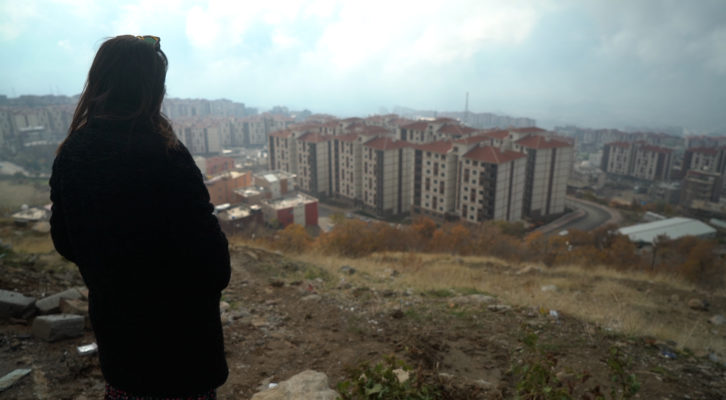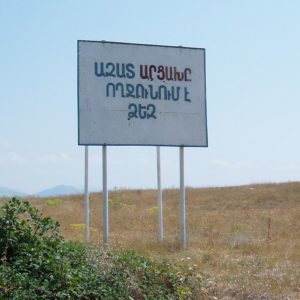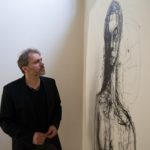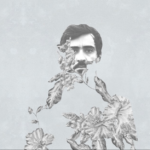The desperate situation of Kurdish women in the Kurdish region of Turkey struck me first while shooting my documentary film in late 2019 in several cities in the region. I managed to observe the intense changes to the socio-cultural dynamics accompanying the urban warfare and ensuing resettlement of locals into state-built apartment blocks, undermining the cultural and traditional patterns of Kurdish provinces and towns. The uneasy and heavy feeling that I experienced became more pronounced when I saw my 60-year-old auntie in the Cizre district of Sirnak province waving her hand from the balcony of her ninth-floor flat in a giant block and jumping to be seen, giving me directions from so far away with her tiny hands to the gate to the block, her new residence, far away from the city center. The reason why it took me some time to see her on her balcony of the high-rise block was not just because she was on the ninth floor, it was also because there were tens of these blocks, every one identical, next to each other, outside the city, and with almost nothing around them. Seeing my tiny auntie stuck amongst all these identical, soulless blocks, tore my heart into pieces. More than anything else it was like seeing a bird being caged who has never been outside a forest. When I climbed the stairs to see her, the bitter feeling I felt inside grew much deeper. I felt she did not belong in here, but she has nowhere else to go.
The last time I saw her was during my solo trip throughout the region in 2008 just before I started studying for my Ph.D. in Kurdish Studies in the UK when I visited her in her house, again in Cizre, where she had lived for more than 30 years and raised all her children including two grandchildren. I remember her house which had a big yard, lots of rooms, and was located just inside the city center where she could access anything she needed. I remember the big smile on her face when as she constantly tried to feed me with the produce she grew in her garden. Now I did not see a trace of joy as she sat silently next to me, staring at the floor.
My aunt is just one of hundreds of thousands of women, most of them Kurds, who were subjected to forced displacement and resettled in these state-built high-rise blocks after several years of urban warfare and the destruction of their houses, leaving them homeless in just one evening, seeing their whole neighborhoods being demolished by the Turkish authorities.
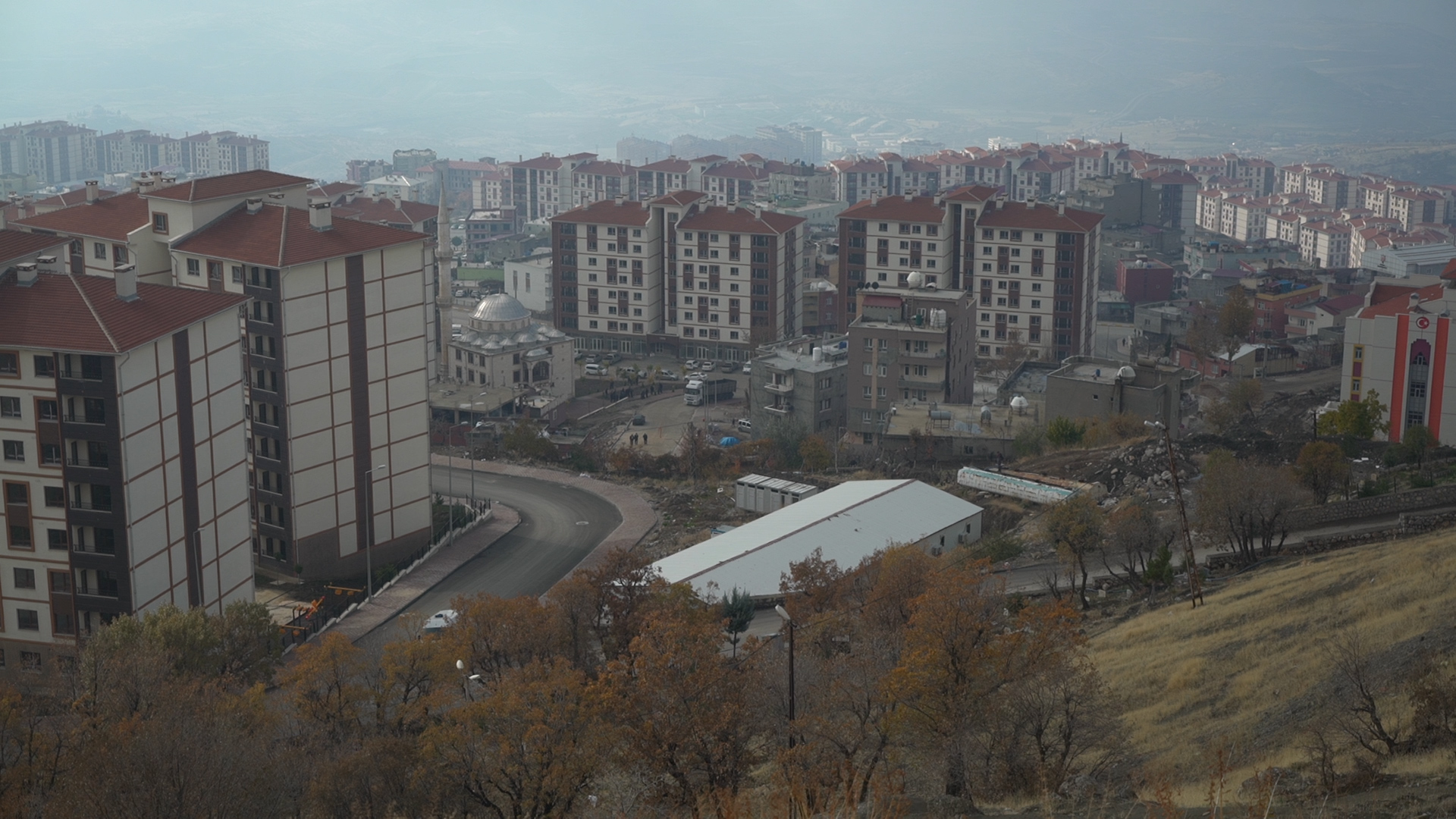
state-built high-rise blocks in Sirnak
Large-scale displacements and demolitions: Lives and culture under the ruins
Urban warfare between the Turkish state and the YDG-H (Patriotic Revolutionary Youth Movement) urban Kurdish youth organization, which is an affiliate of the PKK (Kurdistan Workers Party), broke out in 2015 and continued into 2016 in Kurdish populated cities of southeast Turkey, namely Sur/Diyarbakir, Nusaybin, Yuksekova, Idil, Sirnak, Cizre, and Silopi, resulting in 169 curfews, 5,161 deaths, displacement of an estimated 355,000-500,000 people, along with torture, gender-based violence, disappearances, destruction of historical districts and cultural monuments, and demolition of 16,078 houses during military operations associated with the Turkish Government’s Urgent Expropriation Decree.[1] It is proven that even properties that passed strenuous construction reviews were ordered to be bulldozed.[2]
In my hometown of Şırnak alone the conflicts and military operations involved eight months interrupted curfew, and 8,700 families (55,000 people) out of 61,335 were forced to migrate.[3] 70% of Şırnak was demolished during and after the conflicts, and 6,000 families were relocated into state-built high-rise buildings, mainly outside the city, by the Turkish Ministry of Housing Development Administration (TOKI). I saw the destruction of 70% with my own eyes and Sirnak’s historical and cultural heritage being wiped out. The house where my father was born, the mosque where my grandfather was an Imam for 40 years, was completely bulldozed on the basis of a so-called urgent expropriation decree. Again, in Nusaybin, a district in the province of Mardin, like Şırnak, 70% of buildings were either damaged or demolished by the Turkish Government and it is estimated that 80,000 out of 116,068 locals have been affected and 65,000 forced to migrate from the city. The affected neighborhoods were bulldozed and filled with prison-like blocks.
Although the exact total is uncertain due to the lack of research and state censorship, it is estimated that more than 150 thousand people were forced to resettle in the state-initiated blocks built within the scope of the “Planned Urbanisation and Housing Development Mobilisation” of the Government of the Republic of Turkey after the urban warfare and in the wake of the demolitions carried out under the orders of the government (Ruhavioglu 2021).[4]
This so-called socio-spatial gentrification politics has dramatically changed the social, cultural, and historical fabric of these cities, but the impact of displacement, urban dispossession, and resettlement on local people, especially on women and girls, has been dismissed by both national and international actors. Women have been affected most, as Kurdish women’s domestic space in this region extended beyond their homes and, as most do not participate in the public sphere directly through employment or otherwise, they heavily depended on neighbors for socializing and networking. They are now excluded from their organic habitat, marginalized, and detached from the cultural and traditional practices of their ancestral neighborhoods of mostly self-built houses with outside spaces in which they could herd animals. The blocks are also less appropriate for home-based economic production, having smaller floor areas and lacking outdoor spaces, thereby preventing women from engaging in home-based traditional economic activities. Being pushed outside city centers while their ancestral lands were given over to market-rate development, ‘public’ and ‘private’ spaces have become more segregated. Tens of local women and girls I met and talked to in the region confirm that they have been experiencing livelihood deprivation, marginalization, exclusion, subjugation and detachment from their daily socio-cultural practices and relations. For instance, 37-year-old Hêvî calls for help for clean water as the water storage facilities are not enough for the whole block, and they, as women, are pushed to look for alternative ways to get hold of water for the whole family.[5] Similarly, 45-year-old Sevim says: “Not only has my husband lost his job after the conflicts, and he is still unemployed, we are forced to pay monthly payments for the service charge for the maintenance of the blocks. We did not have such an expense in our old home. Our utility bills are also much higher. I have to go to distant neighborhoods to make bread where I can find a tandoor to use for the household whereas I used to bake it in our own tandoor in our yard”. Sevim concludes that she feels like she is imprisoned in TOKI blocks with her four kids, that she does not know anyone in the other flats, and that this mixture of residents make her scared as she cannot trust anyone that she had not known before the forced displacement.[6]
Such mass urban gentrification projects and their spatial interventions as neoliberalised forms of capital accumulation under the guidance of the conservative and Islamic governing party AKP (Justice and Development Party) is not a new phenomenon for other regions of Turkey.
The Housing Development Administration of Turkey (TOKI) proudly announces that 176,329 blocks, mostly in the Eastern and South-eastern region of Turkey, populated mostly by Kurds, have been built in the last decade, and the main target for the 2019-2023 period is to produce 250,000 new houses which, in fact, means further displacements.
Many state-initiated projects, which are in fact motivated by market-driven goals, being profit-oriented modes of appropriation, have gone beyond the physical regeneration of the physical environment or simply being one of the neoliberal strategies to commodify space. For instance, the regeneration projects targeting Roma neighborhoods in Turkey such as the “Sulukule Regeneration Project” in central Istanbul led to the eviction of local communities who had lived in the same place for over 1000 years, despite the legal objections by academics, professionals, and NGOs, aiming to destroy the entire centuries-old culture of the Roma neighborhoods with their strong tradition of being a tightly-knit community by pushing them outside the city center, while their original neighborhood was turned over to the upper-middle class (Tok and Oguz 2013).[7] Similarly, the aggressive role of the state in demolishing thousands of properties and the large-scale dispossession of people from their livelihoods in the Kurdish region since 2016 not only demonstrates the different modalities of a linkage between forced dispossession and the triad of urbanization processes, but it also highlights the ongoing counter-insurgent geopolitics of the Turkish government with regard to the so-called Kurdish Question (e.g. the socio-economic development project in the region known as GAP (South-east Anatolian Project), including projects such as the Ilisu Dam).
Professor Mark Duffield, known for his extensive work on conflict and humanitarian disasters, has argued that states, military, and other agents deploy humanitarian development interventions as efficient counter-insurgency tactics.[8] In this sense, the Turkish ‘security development nexus’ does not aim to end inequality through development but instead to police and manage it while pursuing war by other means such as forced dispossession and displacement. Accordingly, we see the ubiquitous intensification of urban dispossession in the Kurdish region of Turkey as a neo-liberalization and war-making strategy, encompassing material, cultural and ethnic/racialized dispossession. Backed by state power and the military and legal apparatus, land, water, and intellectual property are seized, and social safety nets are stripped away. The situation also contains a high degree of the dynamics involved in class struggle and political praxis.
History repeats itself but…
Marcus Taylor in his article Displacing Insecurity in a Divided World has shown that securitization through development displaces insecurity onto the most vulnerable populations.[9] In this respect, in the case of such large-scale operations, women and girls are the most vulnerable population. Spatial changes are forcing changes to the women and girls’ strategies of resistance and adaptation to their new state-initiated settings and urban low-income settlement at different levels. There is an urgent need for effective services to be developed to provide much-needed immediate support for women and girls and to mitigate the damaging long-term health, socio-cultural and economic effects of forced dispossession.
The damaging long-term impacts on local women and girls is not just an assumption as it’s happened before. The deadly conflict in the same Kurdish region of Turkey that reached a peak in the 1990s led to the evacuation of many Kurdish villages and the forced displacement of approximately 1.5 million Kurds from South-eastern and Eastern Anatolia, the majority of whom migrated to Western cities looking for work in urban industries. I was one of the children of these migratory families. Suddenly one night we were forced to leave our home in the aftermath of armed urban conflict in 1993 and fled from there to the West of Turkey. The traumatic experience of forced migration and loss of home had a huge impact on my life, needless to say in a very negative way. 28 years later, in the same region, in the same political atmosphere, what I see actually goes beyond a repetition of this history.
“History repeats itself, but in such cunning disguise that we never detect the resemblance until the damage is done”, said the American journalist Sydney J. Harris. It is true that history repeats itself; however, the pain accompanying the repeated event gets bigger and bigger until we stop it from repeating.
Özlem Belçim Galip is a Research Fellow at the Institute of Social and Cultural Anthropology at the University of Oxford. She is the author of Imagining Kurdistan: Identity, Culture and Society (I.B, Tauris, 2015) and Civil Society versus State: New Social Movement and Armenian Question in Turkey (Palgrave, 2020). She is currently at the postproduction stage of her ethnographic documentary film “Anywhere on this Road: Letters to My Unborn Daughter” on Kurdish intellectual women in Europe and her own personal journey as a Kurdish woman migrant, shot in various cities in Turkish Kurdistan along with Germany, England, and Sweden.
This project has received funding from the European Union’s Horizon 2020 research and innovation programme under the Marie Skłodowska-Curie grant agreement No 788651.
Bibliography
[1] See, “Report on the Human Rights Situation in South-East Turkey, July 2015-December 2016”. UN Human Rights Office, 2017. The full report can be accessed here: https://www.ohchr.org/Documents/Countries/TR/OHCHR_South-East_TurkeyReport_10March2017.pdf. “Turkey’s PKK Conflict: A Visual Explainer. International Crisis Group, 2021. Available at: https://www.crisisgroup.org/content/turkeys-pkk-conflict-visual-explainer
[2] “Şırnak’ta sağlam raporlu evler için yeniden yıkım kararı”. Gazete Karinca, 13 June 2017. Available at: https://gazetekarinca.com/2017/06/sirnakta-saglam-raporlu-evler-icin-yeniden-yikim-karari/
[3] “2015-2020 Curfew and Media Monitoring Report”. GÖÇIZDER, 2020. Available at: www.gocizlemedernegi.org
[4] Interview with the director of Rawest Research Centre, Mr Reha Ruhavioglu, 28 June 2021, Diyarbakir/Turkey.
[5] Interview with Hêvî, on 2 April 2021, Cizre/Turkey.
[6] Interview with Sevim, on 15 May 2021, Sirnak/Turkey.
[7] Manifestation of Neoliberal Urbanisation: The Case of Sulukule/Istanbul. Planlama 23 (2), pp. 57-66; Avgenikou, I. et al (2007). Placing Sulukule: towards an alternative proposal to conserve the living heritage of Romani culture. Report prepared by MSc Building and Urban Design in Development students. Development Planning Unit, University College London.
[8] Duffield, M. Development, Territories, and People: Consolidating the External Sovereign Frontier. Alternatives. 2007; 32(2): 225-246. doi:10.1177/030437540703200204
[9] Taylor, M. Displacing Insecurity in a Divided World: global security, international development, and the endless accumulation of capital. Third World Quarterly. 2009. 30 (1): 147-162. Available at: https://www.tandfonline.com/doi/abs/10.1080/01436590802622441


